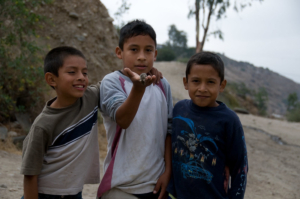Chronic Diseases in Chiapas: Mexico’s “Soft Drink Epidemic”
 High rates of soft drink consumption in Mexico contribute to chronic illness in Chiapas state. With Mexico’s Coca-Cola bottling group holding economic sway over the nation’s poorest region, organizations seek alternative means to fight the deteriorating health situation. In an impoverished state with scarce access to clean water, sugary soft drinks with no nutritional value are cheap, readily available and easy to access, Deutsche Welle reported in October 2023. As such, it is no surprise that diabetes is the second-leading cause of death in Chiapas.
High rates of soft drink consumption in Mexico contribute to chronic illness in Chiapas state. With Mexico’s Coca-Cola bottling group holding economic sway over the nation’s poorest region, organizations seek alternative means to fight the deteriorating health situation. In an impoverished state with scarce access to clean water, sugary soft drinks with no nutritional value are cheap, readily available and easy to access, Deutsche Welle reported in October 2023. As such, it is no surprise that diabetes is the second-leading cause of death in Chiapas.
The Situation
In 2020, the BBC reported that consumption rates of soft drinks in the southern Mexican state of Chiapas were 32 times higher than the world average. This amount equates to over 821 liters per person a year, compared to 100 liters in the neighboring United States and around 25 liters in the rest of the world. In the same year, residents in the highland town of San Cristóbal de las Casas drank more than half a gallon of soda daily.
The Consequences
The consequences of such extensive consumption rates are dire. Health care experts have pointed to sugar consumption as the driving force behind a spike in chronic illness and gastrointestinal (GI) disease. The latter is now one of the leading causes of death in children under 5.
After the COVID-19 outbreak, Mexico’s National Institute of Public Health associated over 40,000 deaths annually as an indirect result of soft drink consumption. Between 2013 and 2016, diabetes-related mortality rates grew by 30%, thought to be killing up to 3,000 Mexican civilians annually. During the pandemic, most deaths among young adults were attributed to diabetes, hypertension or obesity.
Chronic illness in Chiapas, namely diabetes and hypertension, is a growing concern due to limited and inaccessible health care services. The state sees some of the lowest detection and control rates of these conditions across the country. This year, only 7.7% of diabetes patients have had their glucose control levels monitored, compared to 9.6% nationally. Transport costs, staff shortages and financial challenges could be the underlying cause.
Coca-Cola vs. Clean Water
Chronic diseases in Chiapas due to sugary drink consumption is thought to be driven primarily by a “chronic water shortage” in the state. The Los Altos (or highland) region of Chiapas state has experienced an increasing scarcity of potable water, with a drastic reduction in rainfall and poor infrastructure creating obstacles. Traditional “artesian wells” that functioned as a water catchment system are also failing in the region. In Chiapas, about 56% of individuals lack access to basic water services, according to a study by Jannice Alvarado and others, published in 2022.
Authorities permitted a Coca-Cola plant on the outskirts of San Cristóbal to extract over 300,000 gallons of water daily for manufacturing purposes. The factory pays a relatively low rate for this access, amounting to somewhere near 10¢ per 260 gallons. Payments are directed to federal authorities instead of the local government. This fact has limited improvements to local Chiapan infrastructure.
Despite efforts to tax soft drinks at a federal level in 2014, the countless “points of sale” of Coca-Cola across Chiapas have resulted in a 30% price reduction, often making the drink cheaper than bottled (and safe) water. With 74.6% of Chiapanecos living in poverty today, lower costs justify unhealthier drinking choices.
The Solution
A few organizations are working to reduce and prevent chronic diseases in Chiapas. Between 2006 and 2022, Cantaro Azul, a group dedicated to providing safe water to Chiapan communities, has supplied 600,000 people across 150 towns with potable water and sanitation facilities. They have also provided safe water services across 180 rural schools to improve the 14% of indigenous schools with access to such facilities. In 2015, Cantaro Azul also introduced educational initiatives that promote the consumption of water over soft drinks to prevent chronic illness.
This year, researchers from Harvard and UCSF, alongside action group Compañeros en Salud, have introduced shared medical appointments (SMAs) to discuss diet changes and nutrition with patients in a collective setting. With only 35% of the Chiapas population completing secondary education, the scheme aims to improve understanding of health and personal well-being. Patients have reacted positively, and many have reduced their sugar intake.
Water Action Hub, an international risk assessment group, warned that water-related disaster management should be a priority in Mexico this year. The nation is particularly vulnerable to earthquakes and other natural phenomena that can damage treatment systems and facilities. Yet local and federal authorities must address safe water access and improved infrastructure to reduce chronic shortages before meaningful change can be enacted.
There are also hopes that pledges made by Mexico’s soft drink sector to reduce caloric content by 20% before 2024 will reduce rates of chronic diseases in Chiapas. Locals’ overall health and well-being can improve with a commitment to prompt action to improve safe and affordable water in the state.
– Cara Jenkins
Photo: Flickr
